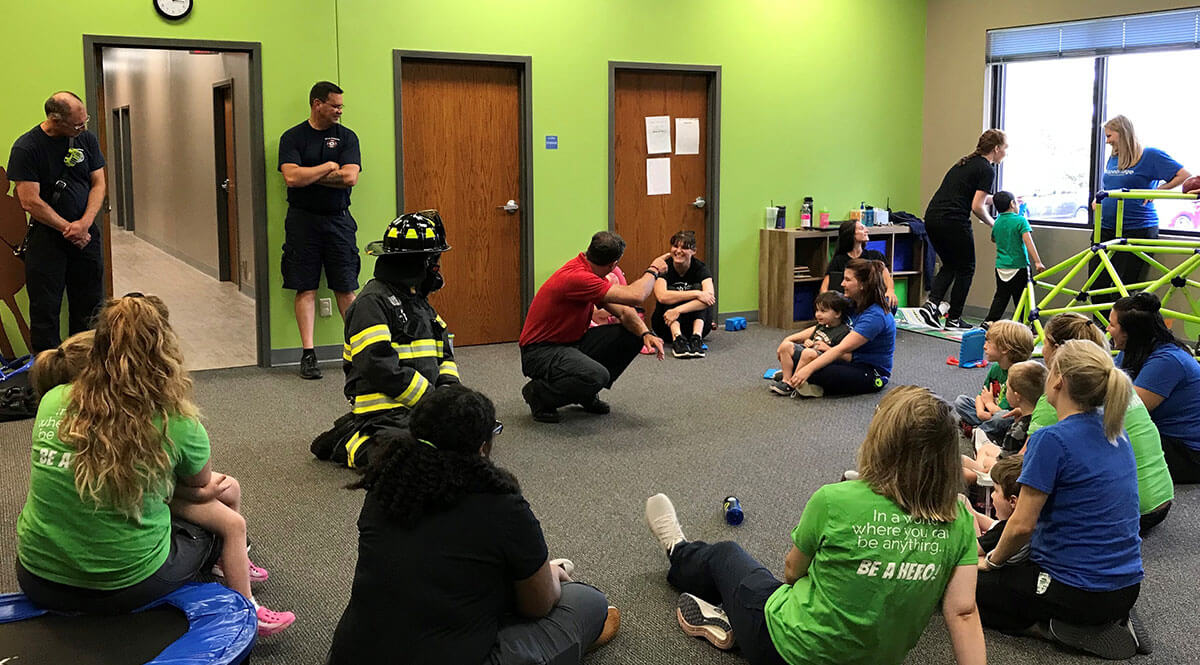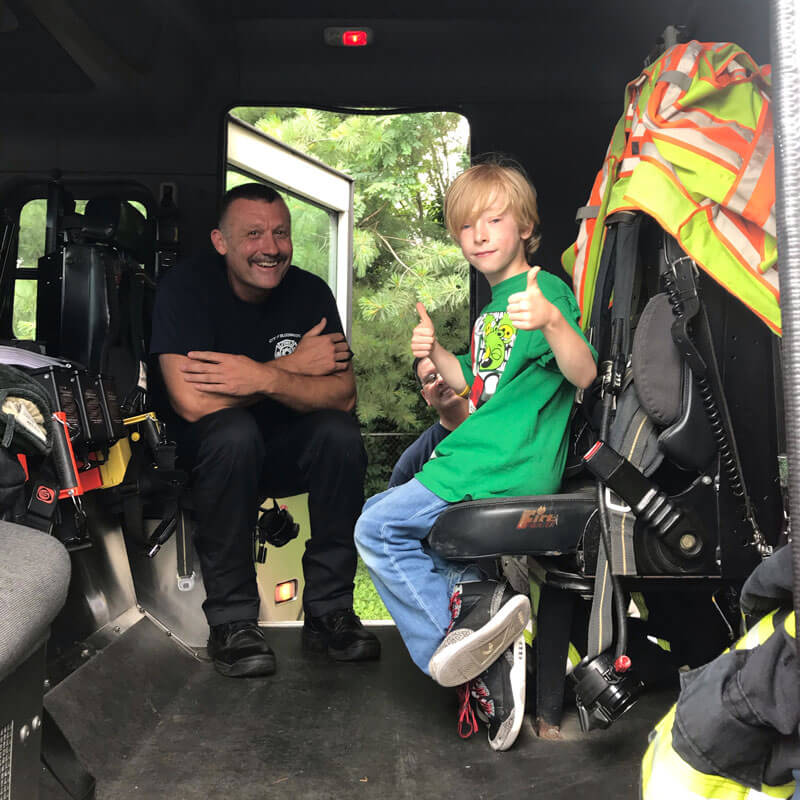Hopebridge BCBA Shares 5 Tips for First Responders Interacting with Children with Autism
January 31, 2020
January 31, 2020

At Hopebridge, we work diligently to help the children in our autism therapy centers become more comfortable with the world around them. We prepare them for interaction with other people and experiences those with neurotypical minds sometimes take for granted, which includes activities for the entire family that involve first response teams. While we do what we can to introduce them to law enforcement officers, fire fighters and other emergency-related professionals in order to ease anxieties around future meetings, we also aim to educate first responders on autism spectrum disorder (ASD).
Without certain precautions in place, even seemingly simple interactions can turn into a stressful situation for all parties, but there are a number of ways first responders can prepare to work with children on the spectrum. Hopebridge Board Certified Behavior Analyst (BCBA) Lynette Rorer from our Bloomington, Indiana center provided us with some helpful guidelines for first responders on how to keep kids with ASD safe during emergencies and rescue situations.

1. Engage in autism sensitivity training.
Due to the growing prevalence of autism, many departments and schools around the country have begun to offer programs for autism sensitivity training. We recommend first responders take advantage of these courses and workshops if they are available locally, like Indiana University Bloomingon’s First Responders Training. If nearby options are not available, there are ways to request training opportunities for a certain area, as well as online courses and webinars to remain proactive. At a minimum, first responders can enhance their education around autism by viewing the resources created by organizations like Autism Speaks, which provide tips for everyone from 911 dispatchers and hospital staff to police and teachers.

2. Familiarize yourself with the signs and symptoms of autism spectrum disorder (ASD).
While emergency situations do not offer much time to get the job done, it is important to not only read the scene, but also the people involved. Simply by being aware of the signs of autism, first responders can lower the risk of further danger or injury. This can be difficult, as those with ASD look like anyone else, however there are behaviors to look out for, which are often exasperated during times of distress or fear. For instance, any time an individual fails to follow instructions – even if their age indicates it would be expected – autism or another disability should be considered. Look out for lack of eye contact and sensory discomfort. Other signs are clear indications of anxiety that may be expressed in atypical ways, such as pacing with unusual body posturing, repeating vocalizations that may seem nonsensical in a perseverative way, and possibly aggression when approached or touched.
3. Be cautious and patient.
Response personnel should be cautious when approaching someone suspected to have ASD. These children may be nervous about the surroundings or response activity. Plus, some kids with autism are known to wander or hide when they are scared, so coming on too quickly or strongly could lead to an elopement situation…or it may already be one, and therefore needs extra care. Do not make sudden moves and approach slowly. Once you have connected, be patient and speak in simple phrases because it may take them longer to respond (if they are verbal, able to point, etc.). We also recommend limiting touching, though if it is necessary for safety, explain what steps will be taken before it happens so as not to alarm the individual.

4. Keep sensory stimuli as low as possible.
Some individuals with autism and other sensory processing disorders can be triggered by loud noises, bright lights, and even temperatures. If there is someone on site who may have ASD, consider dimming headlights and use flashlights when needed, turn off sirens (if possible), and keep radio transmissions as low as possible. These precautions can lessen the risk of tantrums, aggression and wandering.
5. Remain in contact.
Due to the potential of wandering or misunderstanding, it is a good idea for at least one paramedic, firefighter, police officer or another qualified professional to stay with the child with autism at all times until a parent or guardian arrives. Even a quick look away can lead to danger. If the rescue team is in communication with the family, ask for any additional details and calming strategies specific to this person that may be able to assist until they arrive on site.

These simple tips can be life-saving in many situations and Hopebridge is placing more effort on connecting with our community to enhance training and education from both sides.
If you are a parent who has safety concerns associated with autism, we encourage you to check out some of our additional resources. On our blog, you will find guidance from Lynette on home safety for wandering, as well as tips on how to best work with first responders in case of emergency from Indianapolis Fire Department Chief of Special Operations Kevin C. Jones, which includes a downloadable sheet to keep your child’s information on hand and ready to go. ABA therapy is also known to dramatically reduce maladaptive behaviors that inhibit the safety of a child with autism, so contact us to learn more about how Hopebridge can assist in this area, while also increasing overall independence.
*Informed consent was obtained from the participants in this article. This information should not be captured and reused without express permission from Hopebridge, LLC.
Hopebridge in the News
August 16, 2018
Field of Dreams T-Ball League Celebrated 9 Years for Special Needs Kids
Hopebridge in the News
December 08, 2020
Hopebridge Offers Families Affordable Payment Options for Autism Therapy Through CarePayment Partnership
Hopebridge in the News
April 19, 2021
Hopebridge Continues Pediatric Autism Therapy Center Expansion in Arizona
Hopebridge in the News
August 16, 2021
Florida Families Have a New, Effective Option for Autism Therapy in Hopebridge